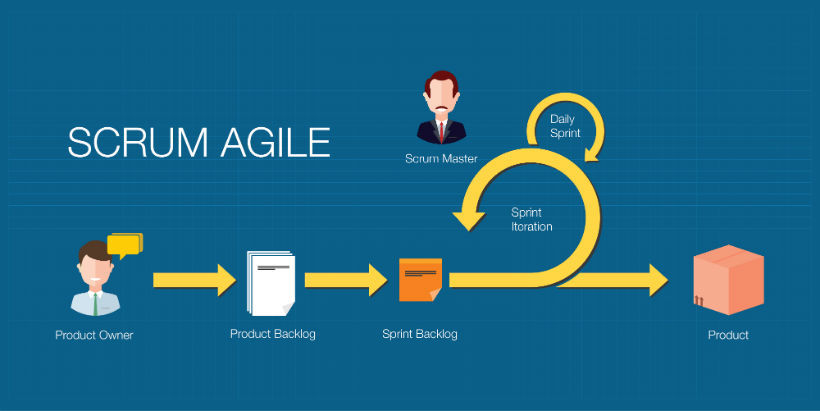How To Fascinate Your Tech-Savvy Learners: 6 eLearning Design Elements To Consider
Few organizations delivering online training today are looking for a tick-box exercise, where all that matters is successful completion. True, content delivery is important; but the benefits of eLearning go far beyond that. An engaging online training course should transfer knowledge whilst, at the same time, improving the corporate learner’s brand awareness and personal development. All of this cannot be achieved through bland, text-based content. This is where interactive eLearning design elements come in. Games, quizzes, video and progress bars are all the minimum standard when it comes to appealing to today’s modern learner. Here we have picked out our top 6 eLearning design elements.
Living Up To Expectations
Your communications surrounding your L&D strategy will aim to excite your corporate learners into active participation. You want people to be galvanized into action by promoting online training as the do-anywhere, do-anytime answer to personal development. How, then, do you meet those expectations once corporate leaners are within your online learning environment? The eLearning course design needs to pique their interest and keep them with you until the final assessment and beyond. Your eLearning authoring tool will give you multitudes of features to employ within your eLearning course design. Choose wisely, and ensure the following 6 eLearning design elements are in all your online training courses.
1. Personalized Learning Paths
Advanced learners will expect a level of personalization, to allow them to track their progress through their online training. Within every online training module or course, there should be a progress bar to show how much time or pages are remaining. Awarding badges for completion of a mini-topic within an online training course adds fun and a sense of achievement. Make sure your LMS supports a personalized learning path, to assist your tech-savvy learners with time management. Allow them to access a social element so that they can discuss their individual opinions with like-minded peers.
2. Video
Video should be a staple of your online training. It adds variety and breaks up the monotony of text. It allows you to bring in real-world examples easily; even better if you can use colleagues from your company. You can use videos to provide demos or online presentations, or even a slideshow element to help with larger chunks of content. If you don’t want or need to create a video from scratch, you can embed YouTube videos. Some modern learners may even look for 360 videos or VR/AR resources that enhance the immersion. For example, a video that allows them to explore the workplace during onboarding online training.
3. Eye-Catching (But Relevant) Graphics
Graphic elements allow you to simplify complex information and to visualize abstract concepts. Whether it is interactive comic-style click-throughs, animation, cartoons or charts, a visual element is an important part of your eLearning course design. One standout design element to include in your online training course is infographics, which allow you to convey key stats, facts, and task steps in a way that’s easy to digest and remember.
4. Gamification Features
Using game mechanics is a powerful way of bringing your subject to life. Along with storytelling, it’s an interesting and fun approach to explain more involved concepts. More advanced learners will expect some kind of simulation or branching scenario paired with incentives. For example, they receive points, badges, or move up the leaderboard when they successfully complete the virtual task or outperform their peers during a branching scenario that deals with customer service skills. Ensure that your learning objectives are aligned with your rewards so that the result is increased knowledge retention. You can also incorporate serious games during training breaks to aid concentration. Employees have the opportunity to skill up as they advance levels and interact with interesting in-game characters. Just make sure the style of your game matches the rest of the eLearning course template!
5. Interactive Assessments
Tech-savvy learners expect a number of assessment points throughout the online training course to check their learning progress. Of course, you’ll want to track the difference from the start and the end of the online training course. You’ll also want to include mini-quizzes at different points throughout the online training course to enhance learning and retention. They are a great way to break up topics or introduce new concepts.
6. Responsive Layouts
Above all else, modern learners expect their training to be able to travel with them. Thus, you should use a responsive design LMS to deploy mobile-friendly resources that are accessible on any device. The system displays the most suitable layout based on the user’s screen size. Thereby, offering everyone the same online training benefits. Furthermore, give your modern learners the opportunity to download content and complete it offline, then update their progress when they resync to the system. This is the ideal option for busy employees with internet connectivity issues. For example, remote sales teams who still need access to product knowledge online training tutorials or infographics. Your new responsive design LMS should have a built-in previewer, so that you can test the layout on several devices and browsers.
When planning your online training strategy make sure you think carefully about the essential eLearning course design elements to keep your users engaged. Include visual and interactive elements to demonstrate the real-world applications for the online training course. Don’t forget to include feedback loops and links to further reading, so that corporate learners can continue to deepen their understanding. Beware alienating corporate learners that are new to online training. Give clear, straightforward instructions. Limit interactive elements to only those that truly enhance the learning experience and offer an alternative, text-based version of video or games content. Allow employees to find their own learning preferences and you will design an online training course that enables meaningful and long-lasting learning.
Another quintessential trait of a tech-forward online training experience is an intuitive User Interface and user-friendly navigation. Read the article Top Advantages Of Using An LMS That Ranks High On The LMS Usability Scale to discover 8 notable advantages to consider.







